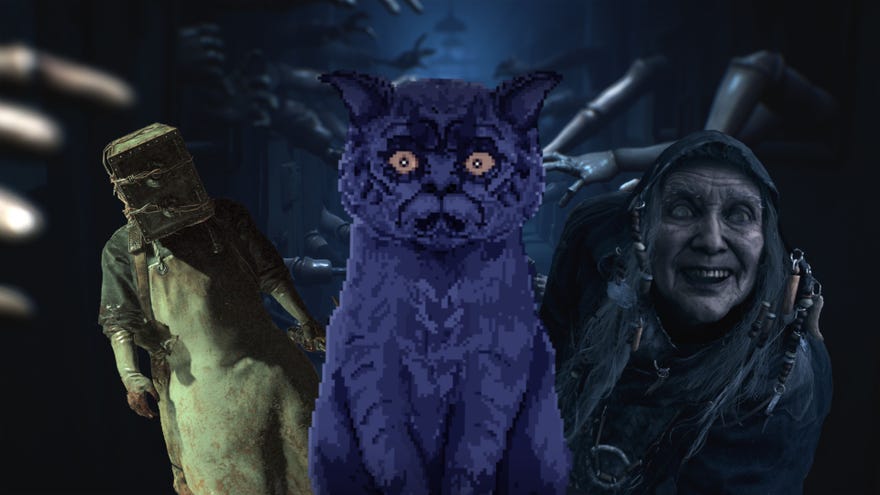The 25 best horror games on PC
Up-to-date with the latest scary releases
It may not be Halloween for a while, but there's no reason you can't celebrate horror as a genre all year round. In fact, it's one of our favourite genre of games, so we've put together our list of the 25 best horror games to play on PC right now. It really showcases the breadth of horror on PC right now, from visual novels to shooters to survival to weirdo demon games and text adventures, so it's a real joy to peruse.
Whether you like gore, survival horror, text-based chills, a bit of action, or even a deck builder, this list has something for fans of all kinds of horror - including if you simply cannot stand a jump scare. A few of the games on this list are jump scare free! We take a bit of a broad view, but in general if a game scares us then it counts as horror and could turn up on the list. One caveat, though, is that all the games on the list are available to buy and play right now, so you don't have to buy something at inflated-rarity prices from an online bidding platform, or anything like that. Great horror games are coming out all the time, so we'll keep updating the list, and if your favourite creepy game hasn't made the cut, you can recommend it in the comments.
The best horror games on PC
- Little Nightmares 2
- Old Gods Rising
- The Quarry
- Detention
- Observer
- My Father's Long Long Legs
- Sylvio
- World Of Horror
- Dead Space 2
- Saturnalia
- The Evil Within
- Lone Survivor
- Amnesia: Rebirth
- Inscryption
- Resident Evil Village
- The Excavation Of Hob's Barrow
- Condemned: Criminal Origins
- Darkwood
- Stories Untold
- Alien: Isolation
- SOMA
- Anatomy
- Pathologic
- System Shock 2
- S.T.A.L.K.E.R.: Call Of Pripyat
25. Little Nightmares 2

Little Nightmares 2 is a fantastic follow up to the first Little Nightmares, as well as being a prequel (no spoilers!). It's taken a while, and some replaying, to acknowledge that actually it's probably better than the original - more polished, a more confident atmosphere, and better developed baddies. In Little Nightmares 2 you play as Mono, a boy with a paper bag on his head, and nightmares about a tall man and television screens inside that head. You're also joined by Six, the protagonist of Little Nightmares, though at this stage she's a bit less confident, and you have to work together to survive this grim, rainy world.
In the first game the hazards are uncanny grownups, but here there are enemies that are more straightforwardly authority figures (like a Teacher with a long, snaking neck), or school bullies, or just unsettling metaphor - gangs of faceless, TV-addicted adults forming mobs. There's also a lot of allusions to self. As with Little Nightmares, monsters are very close to home.
24. Old Gods Rising
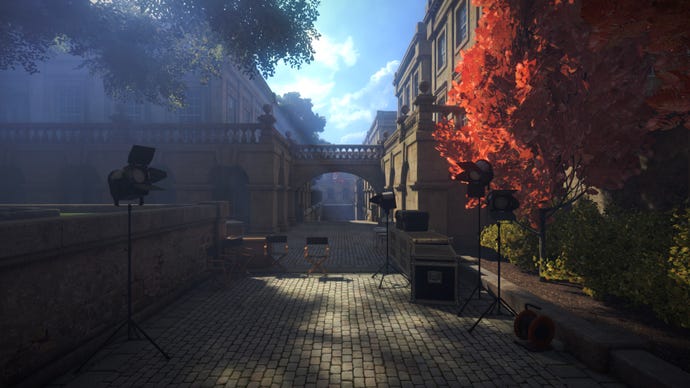
I can't believe I didn't add Old Gods Rising to this list ages ago, since it's a fabulously unsettling game that stuck both in the mind and the craw, and is one of a tiny handful of Lovecraftian games that doesn't become achingly unsubtle. You play as a historical consultant for the latest film by a maverick director, who is filming on location at Ashgate University. When you turn up Ashgate is completely empty, the remains of filming equipment are scattered aroud, but there's nobody to be seen. Except, maybe there is? Was that someone in a high vis vest running around the corner?
Old Gods Rising always keeps you unsettled. You're never sure if you're the subject of one big prank, or if something actually terrible is happening. After all, it would surely be a big ask for a fairly indie film production to build huge weird temples hidden around the university, wouldn't it? Or, maybe it wouldn't. Maybe you weren't supposed to stumble on that bank of monitors connected to cameras that are still rolling. Or maybe you were. Old Gods Rising a really great example of what I believe people call environmental story telling, and it deserved way more attention than it got on release.
23. The Quarry

In terms of games that you can play in a group, as if you're sitting around scarfing popcorn and red laces and watching an actual horror film, it'd surely be hard to beat The Quarry. It's a specific field, but a surprisingly wide one, and The Quarry is the most recent entry. Play switches between a group of teens, each with their own hang ups and relationship woes, who have spent the summer as camp counsellors at Hackett's Quarry. Having survived that, they must now survive an entire night in the surrounded creepy woods being chased by monsters.
Play is a mix of creeping around exploring, and making timed choices in conversation or in QTEs. These decisions stack, and can change the fate of your little gang. They're fullly motion captured by a really enaging group of actors. Plus Ted Raimi is here. Hey Ted! The confidence of the performances from all the actors involved make it a real wrench if they die, but some of the deaths are so absolutely over-the-top gore-fest style that they'll make you laugh out loud and accept them out of respect for the design. And while The Quarry is leaning into tropes, it's also not afraid to play with them. It's got a couple of surprises up its sleeves.
22. Detention

A good horror story can teach you a thing or two, and Detention is not only a very good horror game, it's also a game set in a time and place I knew very little about before playing. The player characters are students in a school, and become trapped there after-hours - but there's more to worry about than the ghosts and ghouls stalking the corridors. Detention takes place in 1960s Taiwan during the period of martial law known as the White Terror and lands in the fine tradition of horror fiction that draws on anxieties and atrocities tied to specific historical, political and social realities.
It's essentially a point and click game, though the side-on perspective and control scheme suggests there might be more in the way of combat or stealth. There is some sneaking, as apparitions stalk the corridors and rooms, but most of your time is spent exploring and figuring out which item goes where so that you can make your way through the plot. It starts with a school, but Detention will take you to other places. Darker, stranger and, at their worst, frighteningly believable.
21. Observer

Observer sounded dreadful when I first heard about it - dreadful in all the wrong ways. I hadn't particularly enjoyed the developer's previous release, art-horror walking sim Layers Of Fear, and initial press releases spoke of delving into unstable minds. Here, I thought, is a game that will lean heavily on tropes about the criminally insane and cliche ideas about mental illness.
How lovely it is to be proven wrong. Observer is smart science fiction first and foremost, with the horror emerging from the setting and characters. It's a game about class, poverty, technology and bureaucracy that also has what may or may not be actual monsters. Mostly, it's a visual masterclass though that uses its mind-hacking to conjure up scenes and distortions that are genuinely astonishing. And while it does eventually lose its way a little, it does so without turning to all those cliches and stereotypes that I initially feared.
20. My Father's Long Long Legs
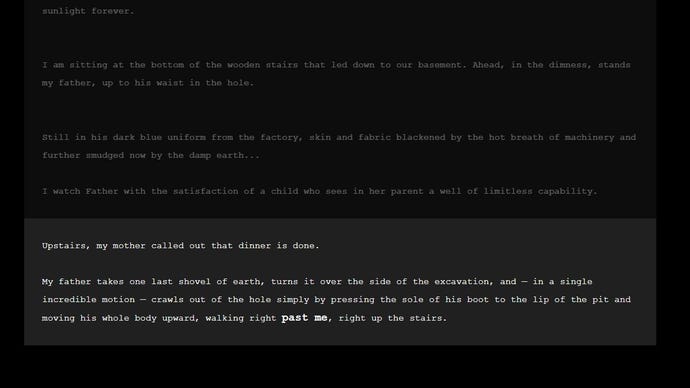
Michael Lutz's short Twine game has the pacing and logic of a nightmare. The choices that you make cause the story to be delivered piecemeal, each morsel adding to the sense of wrongness that comes to a head in a sequence that pushes the Twine medium to its limits. How much can be done with text, a few tricks of layout and design, and a simple sound effect (not a screamer, not a jumpscare)? Enough to trouble sleep and keep the mind turning over impossible horrors and the insinuations that make feasible realities of them.
Many of the games on this list overtly discard their psychological trappings - eventually, the metaphor is shown to be an actual monster. Sometimes, the most terrifying reveal is the discovery that the man behind the curtain actually was a man all along. No wizard, no magic, no cult, no escapist fantasy. A hundred people might have a hundred interpretations as to the specific meaning of My Father's Long Long Legs but most would agree that it's a game that finds an absurd and lasting terror that is somehow recognisable. Fear of the known.
19. Sylvio

The idea that electric voice phenomena - the voices of spirits captured in recordings - is a powerful one because the possibility of fragmented communication from beyond is both reassuring and terrifying. Reassuring to think that some semblance of the self still exists and might make the effort to leave messages for those left behind; terrifying to think that those messages might be warnings or threats, and that they are an ever-present part of the white noise and electronic waves that are the background to our lives.
Sylvio requires the player to gather recordings in an abandoned park, which is drowning in a creepy red mist that would make Silent Hill flinch. There's a smart interface for manipulating the recordings on a reel-to-reel player, altering the direction and speed of playback, and there are puzzles to solve, some clunky and weirdly out of place, others sinister and satisfying. The game's effectiveness comes from its willingness to resist shock, relying instead on a gradually increasing sense of dread that eventually becomes almost unbearable. In a game full of situations in which the player is straining to hear, how easy it would have been to startle them with a scream or a shout - instead, Sylvio relies on the power of its words and in doing so creates a quiet cocoon that, like EVP, is almost comforting until the penny drops.
18. World Of Horror
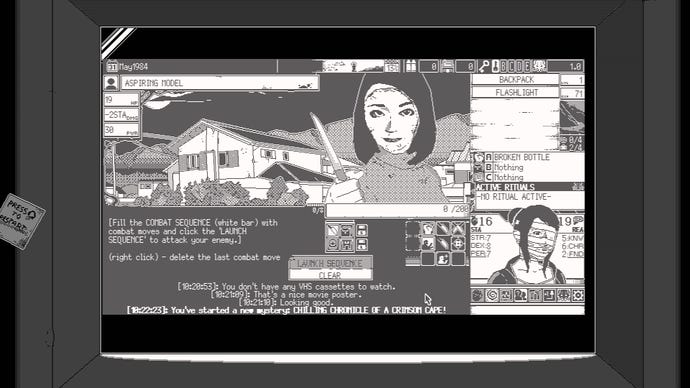
How to stop an old god from entering our world through the lighthouse in your home town? You have a limited amount of time before the ritual is complete, and to get to the top of the tower you need to collect five keys by solving supernatural cases around town. Much of World Of Horror is deliberately obscure, so you learn by iterating through multiple playthroughs of it's pool of cases and gods and events. You become better equipped to face the strange and horrible, which can include yokai with scissor hands, cults tying bodies together, a man making teen girls into mermaids. You know, regular horror stuff. You have to experiment and fail with the complex interlocking systems in this game before you can succeed.
The interface is deliberately non-user friendly and old school, the art is 1bit and made in MSPaint, and the whole thing is a sort of Junji Ito roguelike experience that leaves you very unsettled. You can find strange spells that give you teeth you can use as a weapon. You can use trial and error to find the right combination of movements to use a spell. You can have a bath to try to heal. Maybe you'll lose your face. There's a lot to unpick here, and it's a singular experience doing so.
17. Dead Space 2
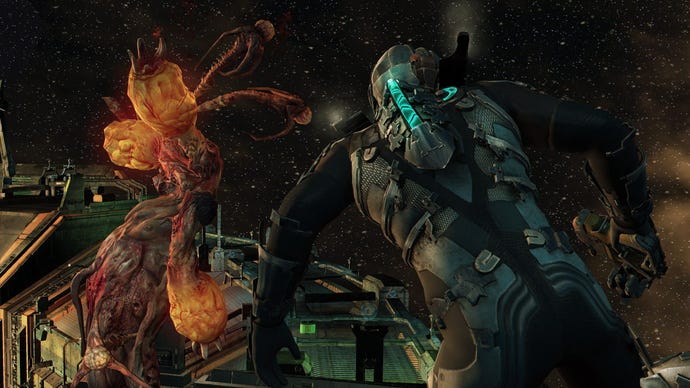
Big budget horror rarely works well. The temptation to show the money on the screen works against the mystery and murkiness necessary for so much that frightens us. The original Dead Space threw everything at the screen - guts, extra limbs, hallucinations, cult religions, erratic sci-fi - and was content to see at least some of it stick. It was at the gun-happy end of the survival horror spectrum but it succeeded in creating a strong setting and icky, fearsome set of creatures to laser-carve into pieces. While the 'tactical' limb-lopping might have been slightly oversold, the combat was satisfying and there were some genuine scares.
Dead Space 2 went bigger. Protagonist Isaac Clarke found his voice (literally - he was silent in the original, bar his grunts of distress and stomp-sigh) and the action moved to The Sprawl, an enormous space station that lived up to its name. The new setting allowed Visceral to mix the familiar with the strange, as Isaac moved through residential quarters, shopping districts and everything else one might expect in a city. The Sprawl was an urban environment that just happened to be located in the vicinity of Titan. That helped to anchor the ridiculous excess of the game's wilder setpieces but Dead Space 2 succeeds because of that excess - it's loud, violent and paced like a theme park ride. There's no subtlety but at least 80% of what Visceral throw at the screen works.
16. Saturnalia
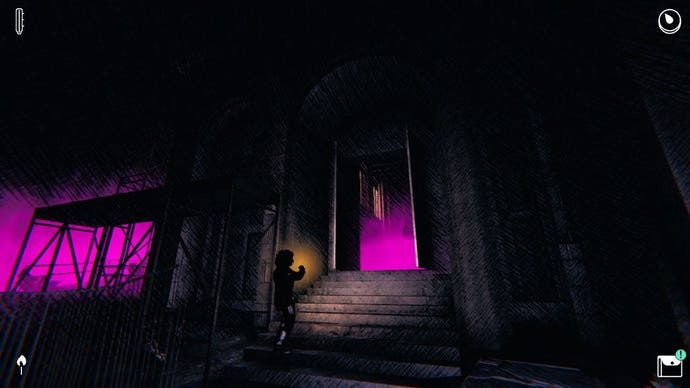
I've written about thinking Saturnalia is so many times at this point that I've almost run out of ways to do so. It's a 80s folk horror set in a fictional Sardinian mining town. You play a group of four outsiders - one new to the town, one trying to get away, two others returning after long absences - and your goal is to use them and their different abilities to survive one night in Gravoi. The difficulty is that said night is that of Gravoi's annual folk festival, and this year that involves the streets being stalked by a scary masked creature that might well carry you off and eat you. You can distract it with firecrackers or a flash camera, and you can run and hide, but otherwise you're just going to have to creep around hoping it doesn't show up.
It becomes increasingly clear that the actual monster is Gravoi itself, both literally (there isn't a map, so you have to remember your way around or else get hopelessly lost, the most dangerous thing of all, and if all four characters die the streets rearrange themselves) and figuratively (the locals are secretive at best and hostile at worst, and this is all happening because they're so opposed to change they'd rather people die). If you've the constitution for it, you can untangle a web of secrets connecting the past and preset of the town: mysterious deaths, secret groups, and union-busting all come up. How much you uncover before you escape - if, indeed, you can - will affect the outcome of your game. And if all that isn't enoug, Saturnalia is beautiful in an arresting, strange way. There's no colour in the game except that provided by sudden bursts of neon lighting: the bright blue lights in the pharmacy, the pink mist, the orange from fires on the street corner. Lovely stuff.
15. The Evil Within
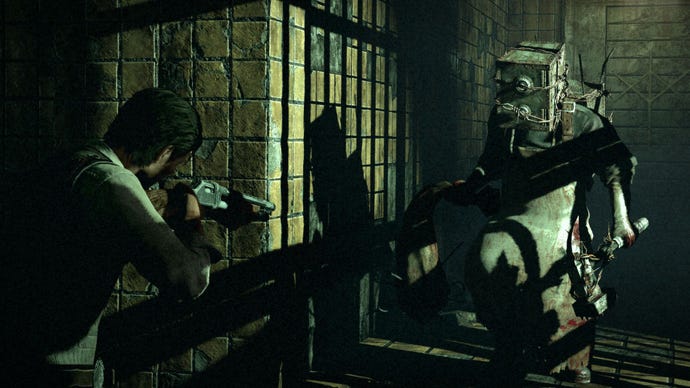
The Evil Within isn't just a third-person survival horror game - it is every third-person survival horror game. It begins in madness and swiftly moves to gothic melodrama and Hammer horror. It contains apparently earnest science fiction concepts and places them alongside hammy mad doctor tropes that would make Kenneth Branagh's topless Frankenstein blush. In one level it introduces invisible enemies that can only be tracked by observing their impact on curtains and puddles, and waves of dynamite-wielding enemies that assault the player and companions in a blood-drenched stand-off.
Throughout all of these tangents and experiments, the game retains almost perfect pacing, finely tuned stealth and combat mechanics, and a level of guts 'n' gore that could make Tom Savini slightly squeamish. What's astonishing - so much so that it's easy to miss - is that the game's almost anthological format allows it to push against the boundaries of survival horror. Even as the end approaches, new ideas are being introduced and the DLC has continued that trend, playing with a defenceless protagonist and then turning the tables completely and popping the player behind the eyes of the box-headed antagonist. It should be a wildly uneven journey, given how much Tango Gameworks explore using the limited toolset of the survival horror template, but everything hangs together beautifully.
14. Lone Survivor
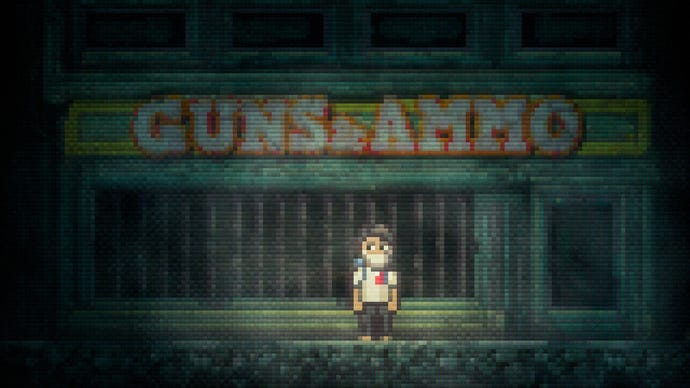
Lone Survivor initially looked like a 2d Resident Evil but as more details emerged, it started to resemble a 2D Silent Hill. That lone developer Jasper Byrne managed to shake off both of those reference points and make something that stands alone is impressive enough, but that Lone Survivor is funny and heartbreaking as well as frightening is astonishing. No game other than Hotline Miami has a soundtrack so important to its mood and overall composition. Whether it's the improbable jazz filtering through a rotting and apparently uninhabited apartment building or the click of fingers in a Lynchian dream lodge, Lone Survivor's horror takes place in a welcoming sea of synths.
The plot demands to be unpicked and although there is a fairly strict structure, replays reveal fresh ideas and the player often has control of the pacing. Some scenes are gruesome but there's a warmth to Lone Survivor. Not everything is lost, even when there seems to be nobody left alive, and despite the monsters, gore and corpses, the eventual horror is touched by sorrow rather than disgust.
13. Amnesia: Rebirth
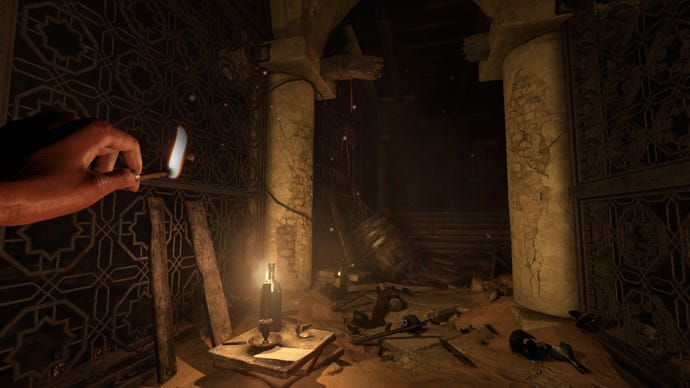
Amnesia: The Dark Descent's water monster captured the imagination of every horror fan who was paying attention. In 2020, Frictional Games squared their horror circle with Amnesia: Rebirth. It's wider in scope, containing not only capsule versions of the haunted house experience to be found in The Dark Descent, but claustrophobic tunnels and sweeping alien landscapes - and, in a surprise for the series, bright sunshine as well.
Though it cracks a little under the weight of wrapping up the complex, history-spanning story of the Amnesia games, Rebirth is Frictional showing off everything they've learned in the last decade. Locations in Rebirth have many layers, and with this Frictional prove they can scare you whenever, however, and with whatever they want. Though there's no water monster this time, the same effect of an ever-present threat, unseen but potentially everywhere, is achieved with monsters that tunnel through the walls. It's also a story about body horror and a threat coming from within, as much as it's about the monsters without, and as such you can never really relax even in the moments that you're supposedly safe.
12. Inscryption
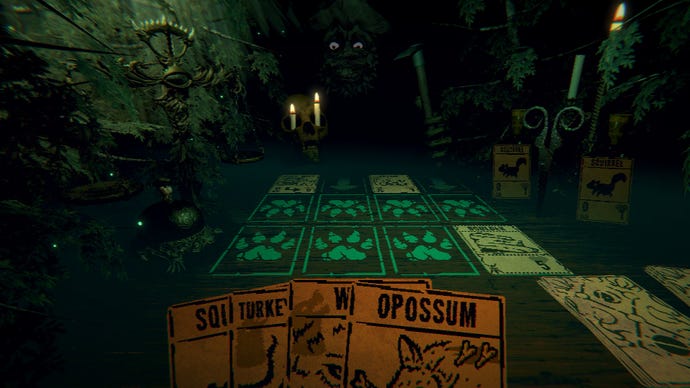
Inscryption is a deckbuilding game where you battle against a scary shadowy figure with glowing eyes. The cards have animals on, with different attack types and ranges. Some cards need others to be sacrificed before you can play them. The field of battle might grow obstacles that block your attacks. It's difficult. You can win by pulling your teeth out. Don't think about that knife on the table. Why is the stoat card talking to you? Should you listen to it? Or is it trying to trick you?
Inscryption is a puzzle game, where you can get up from the card table and walk around a strange cabin, examining things on the walls. Lockboxes. Strange books. A clock. The door is locked. How do you leave. Can you leave?
Inscryption is a meta-story, where, framing the deck-building card-battle game is the story of a YouTuber who follows some clues and finds that game buried in the woods. He plays it and odd things start happening.
Inscryption is a lot of things, and you won't expect any of them. The fun really starts when you finally get out of that cabin...
11. Resident Evil Village
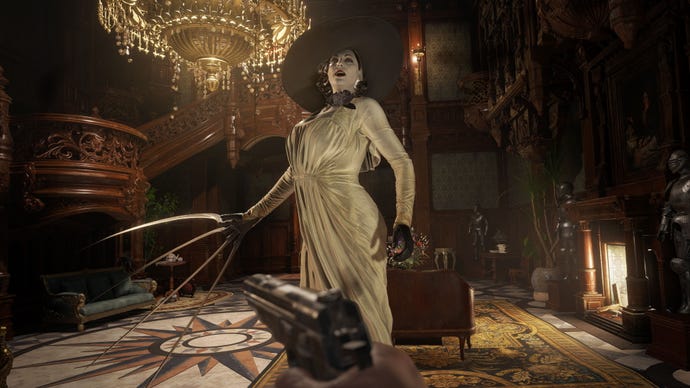
Another year, another new Resident Evil game on this list. Resident Evil Village (sort of Resi 8, in number if not name) follows on from protagonist Ethan's antics with the infinitely horrible Baker family in Resi 7. A year on, and Ethan finds himself up against the denizens of that village, which is full of werewolves, yes, but conveniently also has some big baddies each in their own grim house.
It depends what kind of horror you want, of course, but while the favourite child Resi 4 does have some inspired creepy sections, especially those Regenerators, the latest has one of the most frightening creatures ever to grace the series. That monster is separate, too, from Lady Dimitrescu, who become a pop-culture phenomenon (owing mostly to being very tall, among other things) in a way few characters in any medium manage. And Village also continues the tradition of doing really, really horrible things to Ethan's hands. Though the other tradition established in 7 - that of the game ceasing to be a tense survival horror and becoming more of an action-shooter in the last quarter or so - Village really does have some of the best level and enemy design you'll meet in a Resi game.
10. The Excavation Of Hob's Barrow
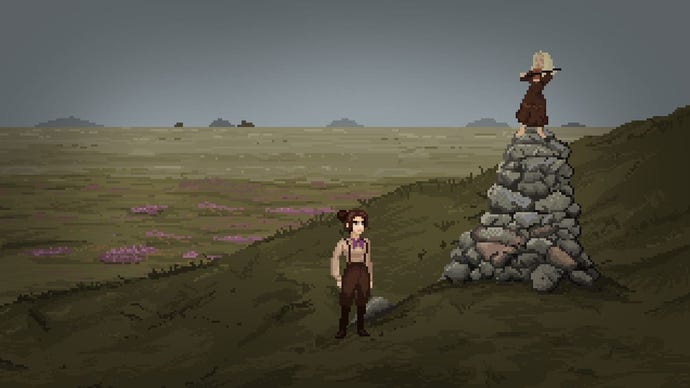
The Excavation of Hob's Barrow is suffused with an intense feeling of doom. Main character Thomasina Bateman, a Victorian barrow-digger, narrates the game from the future, so you know she survives. Yet you're also quite sure she's not alright, and that something terrible happened to her during her quest to excavate the titular barrow. The Thomasina of the past is warned off by many of the dour locals of Bewlay, an isolated moorland town near Bakewell. The player is warned off by Thomasina's narration. But the only way out of this gloomy, lovely folk horror adventure is to go through.
The characters are brought to wonderful, weird life by a full voice cast, and the puzzles run to the weird and mythologic as well as the practical, in a way that matches the progress of the game very well. What you'll remember most about The Excavation Of Hob's Barrow is the pixel art. A traditional medium for point and click games, here it's stretched to its limit. The small details around the town contrast with the wide shots of the moor, and every scene is full of movement. Most striking are the extreme close ups, giving unsettling mobility to the face of a man about to be sick, a cat glaring at you from the foot of your bed, or a strange slack-jawed creature with dark eyes and peg-like teeth. It'll stick with you - as will Thomasina's eventual fate. I hope folk horror continues its comeback.
9. Condemned: Criminal Origins
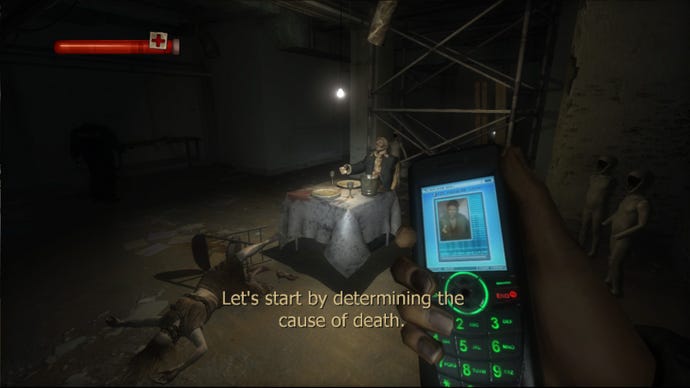
Condemned is a game about the hunt for a serial killer that very swiftly becomes a game about beating people to death with a plank. Whether we're supposed to laugh at how rapidly the investigator becomes a murderer, knee-deep in the corpses of unfortunates, isn't entirely clear. The entire game is pitched oh-so seriously, never seeming to acknowledge the campy potential of its ludicrous 'everyone-is-now-an-angry-murderer' plot. There's something about dead birds and shards of metal, but Condemned is best enjoyed as the best horror-melee game in existence. Whatever else it might, it is certainly that.
Is there a dingier setting in gaming? Condemned's city is like a metaphor for the societal pressures that grind the underclass into the dirt and the gutter. Except it's not really a metaphor at all - it's an entire game in which people are physically ground into the dirt and the gutter. Nobody seems to enjoy fighting or killing - the primary antagonist aside - but almost everyone you meet is compelled to grab the nearest blunt object and pummel your skull until your brains fall out of your nose. The atmosphere is relentlessly oppressive, so much so that some people are likely to switch off, numbed by the unchanging grime long before the end. That's understandable. For those who can tolerate the single note that plays throughout, Condemned is a rare thing though - a horror game in which the combat emphasises the terror rather than diminishing it.
8. Darkwood
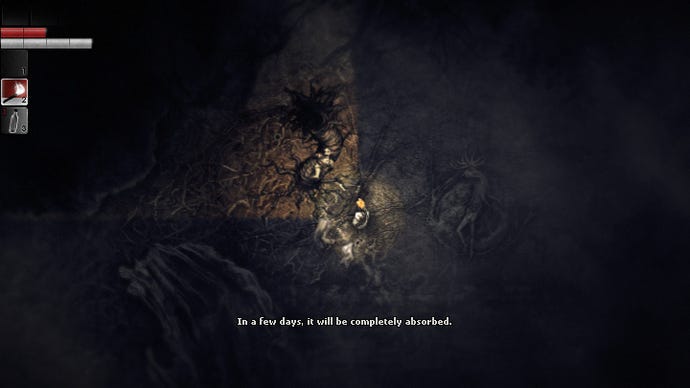
Boasting some of the best lighting in a top-down 2D game you're ever likely to see, Darkwood makes the shadowy corners of a room, or the spaces between trees, absolutely terrifying. Things skitter into view, go bump in the night and then latch onto your face or leg, and chew right down to the bone.
Don't be fooled by the screenshots and videos into thinking this is a crafting/survival game with horror elements. It's a narrative game and a surreal nightmare that borrows from RPGs, roguelikes and survival games but feels distinct from any particular genre. Really, deep down, it's a pure horror game, with all of its design focused on unnerving and startling its players. It's also in the rare group that might make you recoil from the screen but also has enough quiet dread to creep back into your mind late at night when you're far from the screen in a far more insidious fashion.
7. Stories Untold
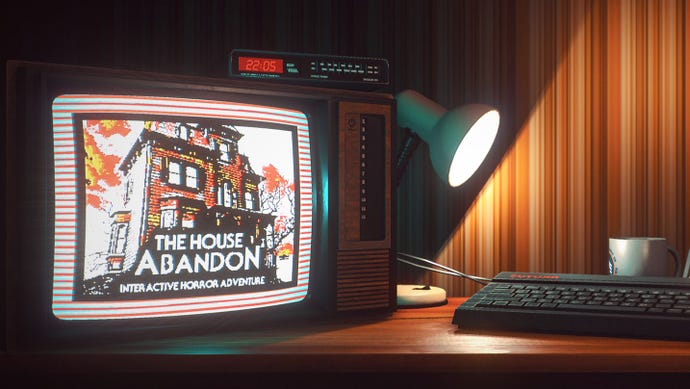
The House Abandon alone might have been enough for developers No Code to earn a place on this list. Originally released for free, it's a superb spin on parser-based interactive fiction, putting the player in the shoes of somebody playing a game which is maybe about somebody playing the same game. It plays with perception, expectation and interaction in ways that made us smile as much as they made us shudder. It's scary, but it's also delightfully clever.
But there's much more than The House Abandon here. One of No Code's founders, Jon McKellan, previously worked on Alien: Isolation and some of that game's DNA has carried across with him. It's the love of old-fashioned interfaces that make up so much of Alien's retro-future that you'll see in the other tales that make up Stories Untold. Each has its own mode of interaction and loosely fits into its own sub-genre of horror. Consistently surprising, genuinely unnerving, and wholly unique, this marks No Code out as one of the most exciting young studios in the world.
6. Alien: Isolation
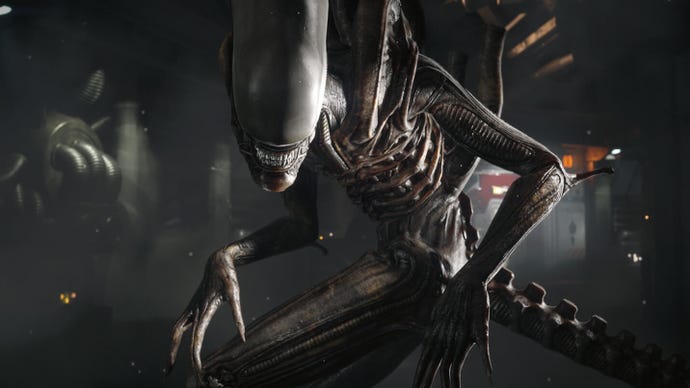
Has a game ever recreated the look and feel of a film as accurately as Alien: Isolation? If so, I haven’t played it. Creative Assembly’s FPS horror masterpiece isn’t just a generous portion of stealth and scares, it’s a superbly detailed trip into the world that Ridley Scott and his team brought to the screen three and a half decades ago. Everything from the creature itself to the individual posters and pieces of machinery that fill the Sevastopol has been crafted to fit with the design principles that made the Nostromo such a fascinating and enduring location.
This is a vision of a future populated by ordinary people – working Joes, you could call them – who just so happen to make their living as part of the crew of gargantuan spacefaring vessels and stations. Within that world, Isolation is a story about a horrific alien that seems to be made of knives, acid and a phallus tearing through the population of a science fiction facility. It is also the story of a woman who has lost her mother, searching for answers. And then again, it’s the story of a corporation in decline, of power plays and the victims of financial competition. That it manages to tell all of those intertwined tales while also delivering one of the most tense and terrifying system-driven games of this or any other year is a remarkable achievement.
Isolation is an unforgiving game. Unfair even. The alien will kill you, again and again and again. That’s the nature of the beast, though, and would the game feel like an authentic Alien experience if every encounter didn’t come with the risk of a swift demise?
5. SOMA
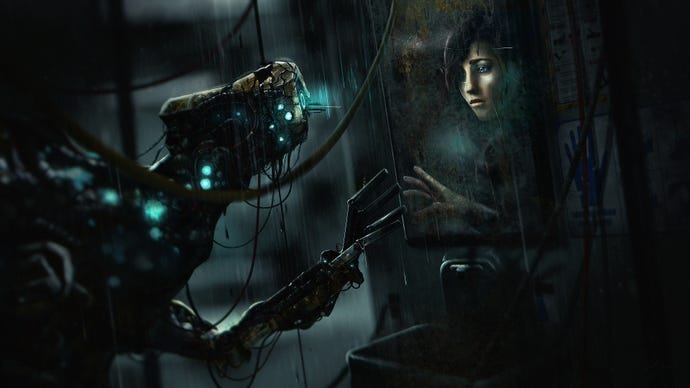
Soma (styled as SOMA) was the difficult second album for Frictional after the hype of Amnesia, and it turned out to be another enduringly fabulous horror game. Though it's also a sci-fi game, using futuristic tech, and an AI with a very rigid interpretation of what it might mean for humanity to 'survive', to explore the idea of self, the conclusions it comes to and the ideas that it makes you examine are frightening. They are enduringly scary. They are scary in a way that will keep you up at night weeks after you play it.
Stuck in an undersea science facility, decades after everyone you knew and loved has already died, you find it haunted by fusions of man and machine that are as sorrowful as they are frightening. They whisper snatches of half-remembered thoughts to themselves, or else are unaware that they're a human mind trapped in an automaton - they see their metal hands as flesh and blood. And in this context, the walls seem alive too. They seep water and black good. The metal doors and hallways feel like they're watching you - after all, haven't you seen metal screaming? And most horrifying of all is the gradual revelation of what has become of humanity - both the species as a whole, and yourself.
4. Anatomy
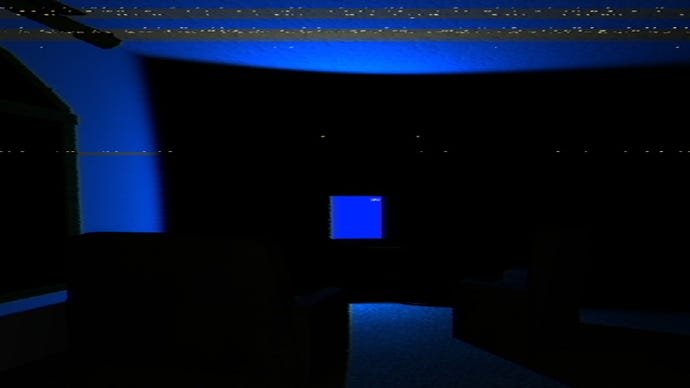
The less said the better when it comes to Kitty Horrowshow's masterpiece, which uses elements of found footage and lo-fi visuals to create the only piece of horror fiction that has ever made me want to leave my own home and sleep in a hotel for the night.
It's short, though it has only just begun after the first playthrough, and I challenge anyone to play it in the dark, wearing headphones, alone. There are no sudden frights but if you're amenable to its particular sense of dread, Anatomy will actually steal sleep from you.
3. Pathologic

Pathologic is unique. It almost seems reductive to describe it as a horror game, but if not horror then what? Set in a diseased town whose districts and major buildings are named after parts of a human body or biological functions and extractions, Pathologic doesn't place the player character at the centre of things. You can move toward the centre of things, in an attempt to keep yourself alive or to discover the city's secrets, but the game never panders to you.
The story of the city's death takes place over twelve days and can be experienced from three different perspectives. Brilliantly constructed, the setting and story are among the most literate and intelligent in gaming, and that they can be experienced piecemeal is testament to Ice-Pick Lodge's ability to exercise the unique qualities of the medium. It's not an exaggeration to say that Pathologic advanced interactive storytelling in ways that few games ever have. Or at least it would have done if anyone had been paying attention, or had been able to emulate its finer qualities.
2. System Shock 2
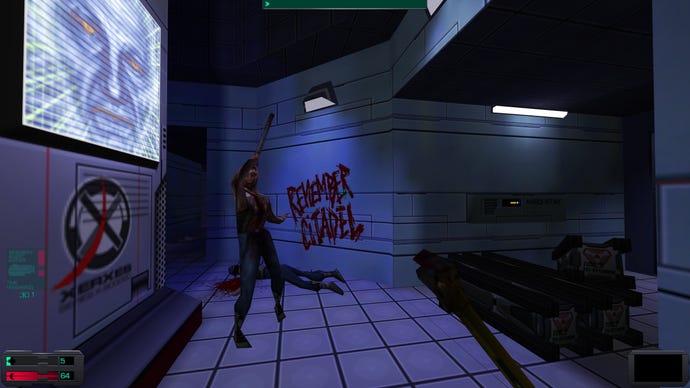
System Shock 2 is one of the best games ever made, whatever the chosen category might be. Few games, whether set in the depths of dungeons or the depths of space, have captured the claustrophobia that comes from existing in a space surrounded and infiltrated by death. You're never allowed to forget that a skin of metal separates you from extinction and that the interior spaces that the universe is pressing against from the outside are filled with corrupted and corrupting organisms.
That sense of dread and doom makes Irrational's masterpiece one of the greatest horror games and, as a sci-fi horror RPG, it is unique. Shock 2 is a first-person survival horror game, but it's the use of RPG mechanics such as inventory management and character development that allow it to retain its power on repeated visits. There is no other RPG so tightly designed, so terrifying and yet so open to experimental play.
The cyborg midwives, as their name suggests, are the most horrifying creatures in any game. Even monkeys have become agents of fear within the coffin-ships of Shock 2. Oh, and there are spiders. Of course there are spiders. It's the freedom that you're given to approach those enemies that makes them truly horrifying, though. That the game gives you so much agency allows you to feel like the agent of your own destruction, and that you are never railroaded makes it easier to believe that the things that lurk in the dark have as much freedom as you do.
1. S.T.A.L.K.E.R.: Call Of Pripyat
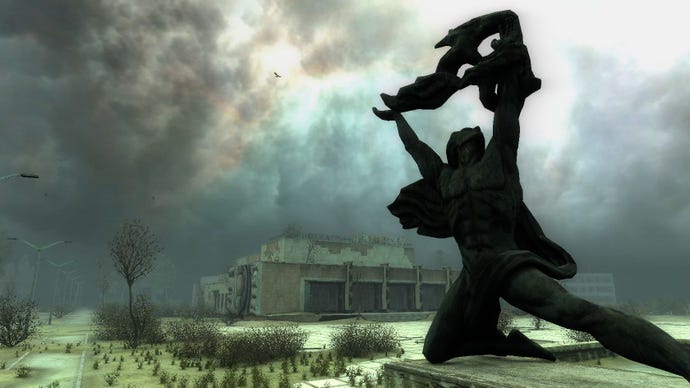
Let's be clear - Call Of Pripyat could sit in the top spot on many lists, but this is as much its rightful home as any other. The S.T.A.L.K.E.R. games are often spoken of as immersive simulations, and as first-person games that transcend the shooter bracket. The S.T.A.L.K.E.R. games are about exploration, encouraging you to dig deeper until, like the dwarves of Moria, you unleash terrible things. And those terrible things are far more terrible than the inhabitants of a haunted house or a derelict spaceship.
Everything flows naturally from the world. If you need something, you find it within its place and if you are required to do something then you consider, observe and approach. This is a world that is dying and yet in which you can live, for a few hours at a time, building relationships not only with the people but with specific places and features. It is a real place made fiction, as much by the historical events that shape the games' mythology as by the games themselves.
At their most harrowing, the creatures of Pripyat are the final barrier that stands between you and an understanding of the world. There are anomalies that fuse bone and boil blood, and those can be accepted and circumvented with a little ingenuity. There are blistered buildings and the skeletons of a society, and those too can be accommodated into our understanding with a shudder and a sidelong glance. But the things that lurk in the darkest, most claustrophobic corridors and tunnels of the Zone do not allow the mind to linger upon them. They are horrors in the truest sense - entities that behave in a repugnant fashion and that are simply unacceptable. They should not exist and cannot exist. But once they have been encountered, they will always be there, just beneath the surface. Just behind the walls.
